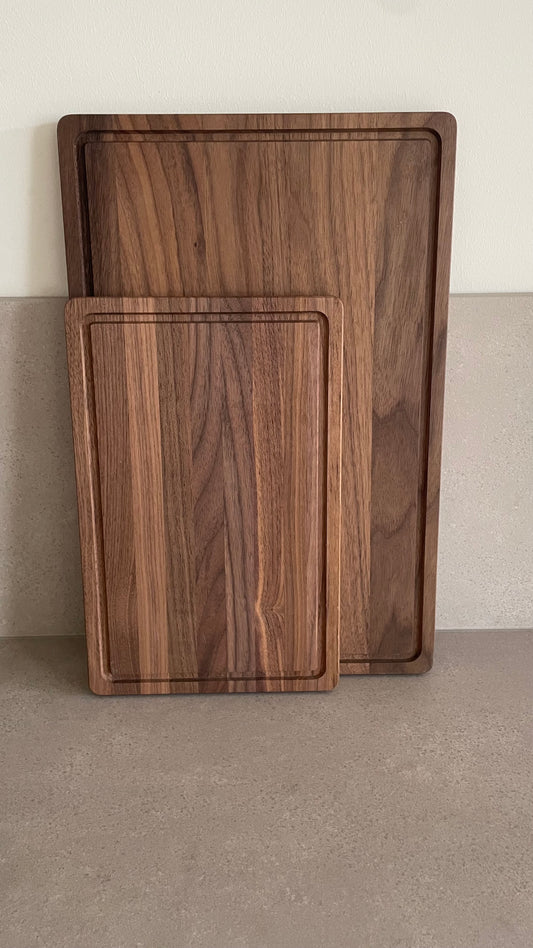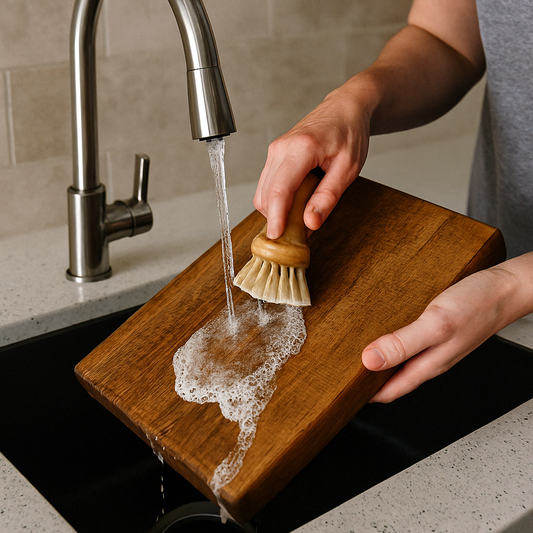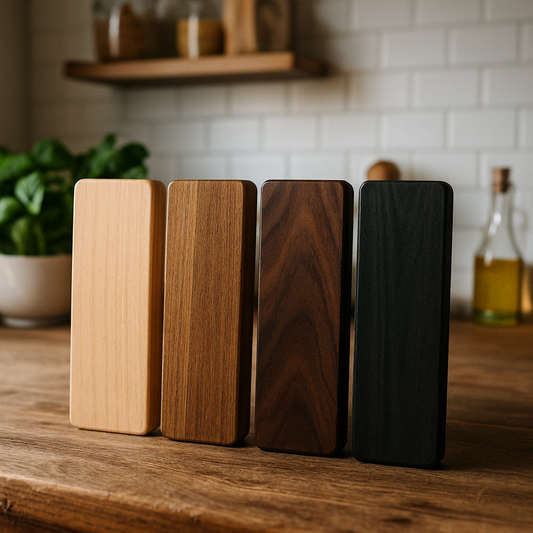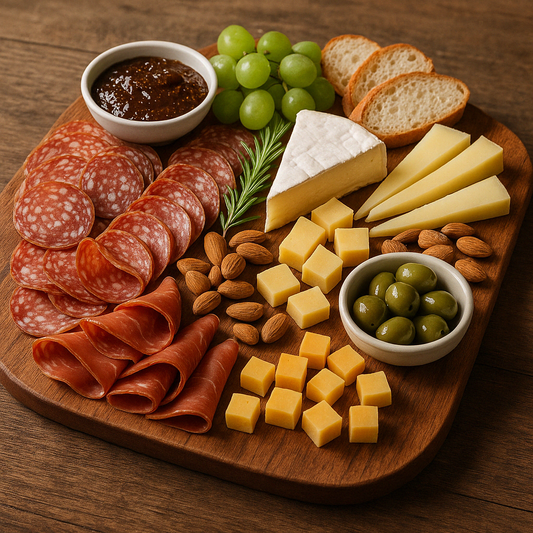Cutting boards are undoubtedly among the most important kitchen utensils, yet they continue to generate controversy – especially when it comes to hygiene. Wooden cutting boards, in particular , are suspected of providing an ideal breeding ground for germs. But is this really true? Are plastic or glass boards actually the more hygienic choice, or does wood offer surprising advantages?
In this post, we'll debunk this myth and show you why a wooden cutting board is not only a safe but also a sustainable choice for your kitchen. Let's dive right in!
Prejudice or truth: Are wooden cutting boards really unhygienic?
Many people believe that using wood in the kitchen is unhygienic. They worry that bacteria could penetrate the porous surface of the material and thrive there, especially when preparing raw meat . But how justified is this fear?
Where does the myth come from?
The myth that wooden cutting boards are unhygienic has persisted over the past few decades. It stems primarily from the era when plastic was promoted as the "clean" material for the kitchen. Plastic seemed more modern, was easier to clean, and quickly became the standard. However, this overlooked the fact that wood has properties that plastic cannot offer.
Another reason for wood's bad reputation is the assumption that its organic structure is particularly good at absorbing germs. This may sound logical at first glance, but the reality is different: Wood has the natural ability to kill bacteria. More on that in a moment.
Comparison with other materials such as plastic and glass
To understand how wood compares, it is worth taking a look at other materials:
-
Plastic:
Plastic cutting boards may seem easy to clean, but bacteria tend to settle in the fine grooves created by cutting. They're difficult to remove, even with thorough rinsing. Furthermore, plastic boards degrade into microplastics over time—a problem for the environment and potentially for our health as well. -
Glass:
While glass boards are easy to clean, they have one major drawback: They're extremely hard. This damages your knives, causing them to become dull quickly. Glass is also slippery, which can make working on them unsafe. -
Wood:
Wooden cutting boards offer a soft yet durable surface that protects your knives. The natural structure of the wood "draws" bacteria into the upper layers, where they quickly die due to the loss of moisture.
What science says – Why wood is hygienically convincing
Science has taken a close look at wood, and the results speak for themselves. Studies show that wood often performs better than plastic in terms of hygiene.
The natural antibacterial properties of wood
Wood has a special property: It's naturally antibacterial. This is because wood absorbs bacteria into the upper layers, where they have no access to moisture. Without water, the germs die within a few hours. Plastic, on the other hand, keeps bacteria on the surface, where they can continue to multiply at the right temperature.
Some wood species, such as oak or walnut , also contain tannins – natural substances that inhibit the growth of bacteria. These properties make wood a particularly hygienic material, even for use in the kitchen.
Half the battle – properly care for and clean wooden cutting boards
To ensure that your wooden cutting board remains hygienic and lasts a long time, it depends on the Proper care and cleaning are essential. With a few simple steps, you can significantly extend the lifespan of your wooden board and contribute significantly to proper hygiene.
Cleaning tips for wood after daily use
After each use, you should rinse your wooden cutting board under warm running water . Use a sponge and a little mild dish soap to remove any food residue, or use a damp cloth . Important: Let the board dry completely afterwards – ideally on its side so both sides can be evenly ventilated.
You can remove stubborn odors with household remedies. Sprinkle some coarse salt on the surface and rub it with half a lemon. The salt acts as a gentle exfoliator, while the acid in the lemon neutralizes and disinfects odors.
Intensive care for longevity
At least once a month you should Oiling a wooden cutting board . Food-safe oil, such as linseed oil or jojoba oil, is suitable for this. Apply a thin layer of oil to the clean, dry board and let it soak in overnight. This makes the wood more resistant to moisture and keeps it supple.
Avoid putting your wooden board in the dishwasher or soaking it in water for long periods of time – this can damage the material.
That's why a wooden cutting board belongs in every kitchen
Wooden cutting boards offer many benefits that go far beyond hygiene:
-
Gentle on high-quality knives :
Wood is soft enough to protect your knife blades, so they stay sharp longer. -
Sustainability:
A wooden board is environmentally friendly and durable. Unlike plastic, it leaves no microplastic waste and, as a renewable raw material, is the ideal choice. -
Aesthetics and pleasant feel :
Wood not only looks elegant, but also usually feels high-quality and pleasant to the touch. Another plus point is that its unique grain gives your kitchen a natural and warm touch. -
Longevity:
With proper care , a wooden board will last for decades and will still look beautiful even after long use – a real asset for any cook.
Conclusion – Wooden cutting boards as the more hygienic choice
The myth that wooden cutting boards are unhygienic has been definitively debunked. Wood not only offers natural antibacterial properties , but is also kind to the environment and your knives. With proper care , a wooden cutting board is a reliable and long-lasting companion in your kitchen.
Whether for daily meal prep or as a stylish serving aid, such as a charcuterie board, a wooden cutting board is the perfect choice for anyone who values hygiene, sustainability, and aesthetics. So, what are you waiting for? Make your wooden cutting board—preferably from schneidebrett.de —the star of your kitchen!











